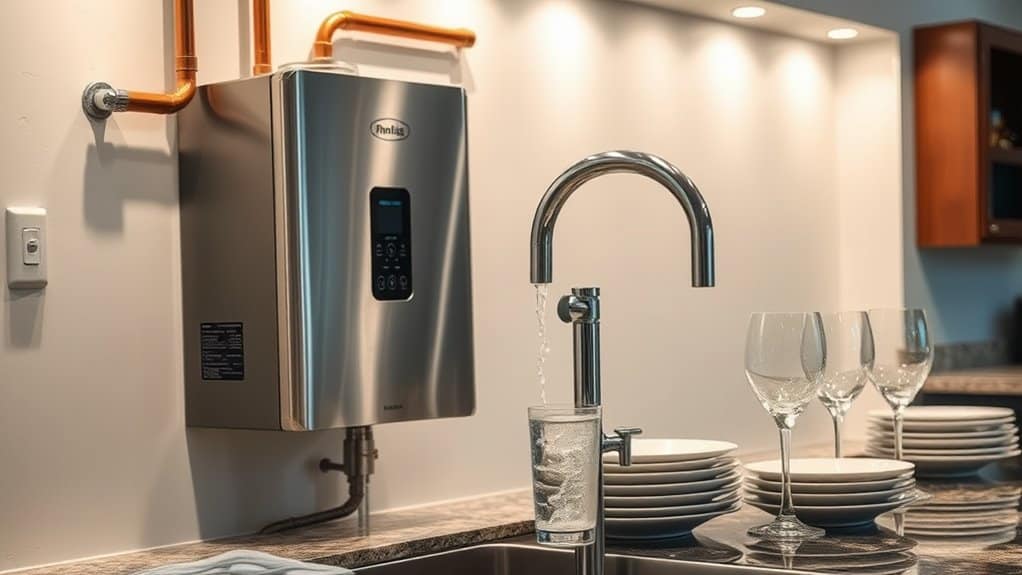Homeowners are installing salt-free water softeners now before prices jump due to the market’s 7.1% projected growth and supply chain pressures. These systems prevent costly mineral deposits that reduce appliance efficiency by 30-50%, while offering immediate financial benefits. With average savings of $1,550 annually and ROI within 26 months, today’s investment locks in current pricing. The long-term economics make perfect sense when you consider what’s really at stake.
Key Takeaways
- The water softener market is projected to grow at 7.1% CAGR through 2025, driving imminent price increases.
- Installing now helps homeowners avoid significant future expenses from hard water damage to appliances and plumbing.
- Systems typically pay for themselves within 2 years, delivering average annual household savings of $1,550.
- Salt-free technology offers lower maintenance costs with media replacement needed only every 3-5 years.
- Current installations lock in today’s pricing before supply chain pressures and raw material costs force increases.
The Hidden Costs of Hard Water on Your Home Appliances and Plumbing
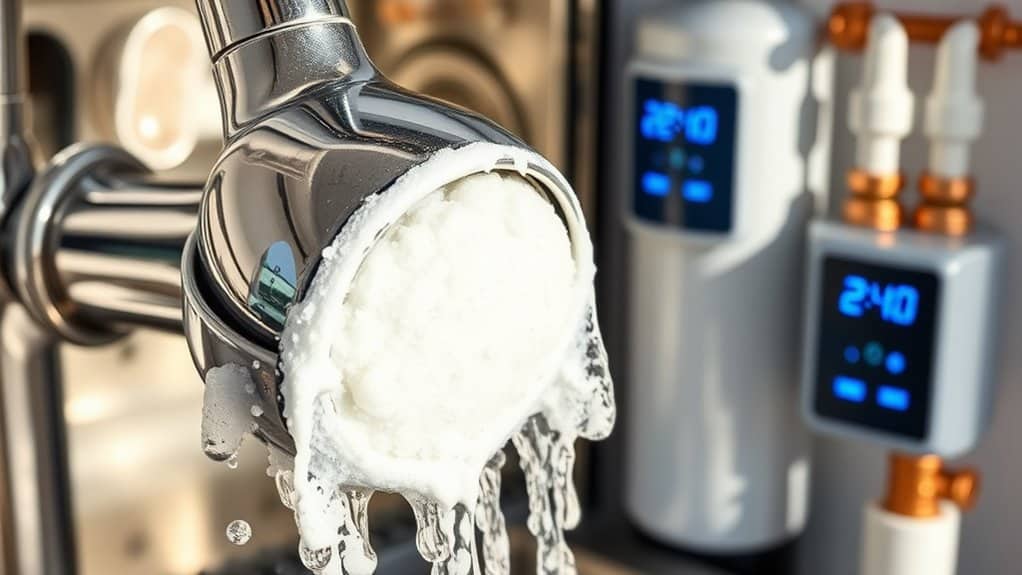
While many homeowners focus on the visible signs of hard water—like spots on dishes or soap scum in the shower—the most costly damage occurs behind the scenes in your appliances and plumbing system.
We’ve seen how mineral deposits silently accumulate in dishwashers, washing machines, and water heaters, reducing their efficiency by 30-50%. Hard water damage can lead to significant drops in performance over time.
These buildups force your appliances to work harder, increasing energy consumption and utility bills significantly.
What’s worse, manufacturers often void warranties when hard water damage is detected.
The financial impact extends beyond repairs to include frequent maintenance, replacement costs, and plumbing issues from reduced water flow and pressure. Hard water also causes significant damage through scale buildup that narrows pipe passages and leads to slow drains throughout your home.
Salt-Free Water Softener Technology: Why It’s Becoming the Homeowner’s Choice
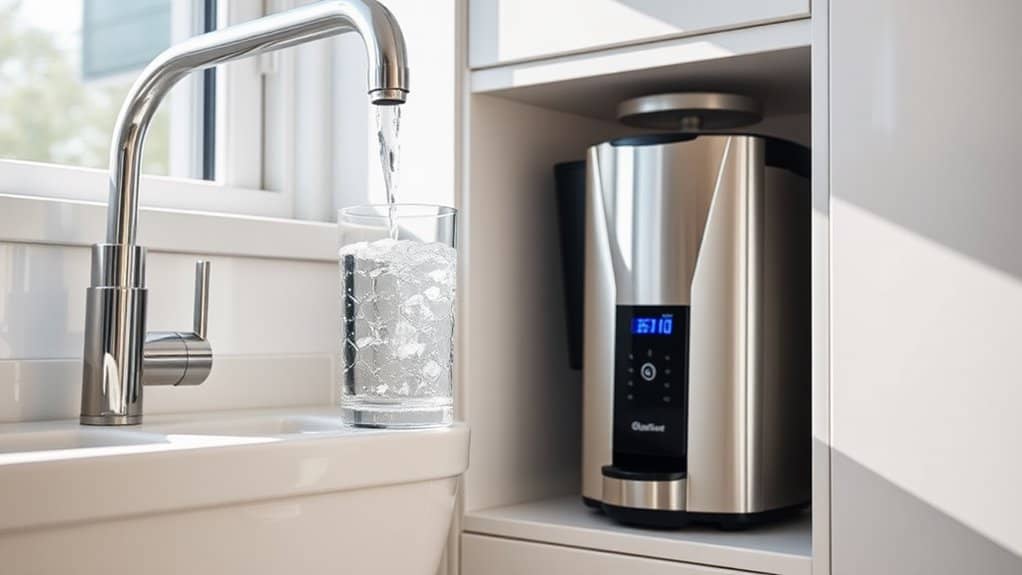
As homeowners become increasingly concerned about environmental impact and maintenance requirements, salt-free water conditioning technology has emerged as a compelling alternative to traditional salt-based softeners. These systems use Template-Assisted Crystallization (TAC) or magnetic treatment to transform minerals rather than remove them. Unlike traditional softeners, they don’t require salt refills or regeneration cycles, reducing ongoing maintenance and operating costs. This innovative approach aligns with the growing trend of revolutionizing water treatment by emphasizing sustainability and efficiency.
We’re seeing increased adoption because they’re environmentally superior—producing no wastewater or chlorides—while effectively preventing scale buildup in pipes and appliances. The TAC media typically needs replacement only every 3-5 years, making them a low-maintenance option for busy households. They’re especially appealing to health-conscious consumers avoiding sodium addition to their water.
Despite higher upfront costs, the extended lifespan and reduced maintenance make them increasingly attractive to modern homeowners.
Market Trends Signaling Imminent Price Increases in Water Softening Systems
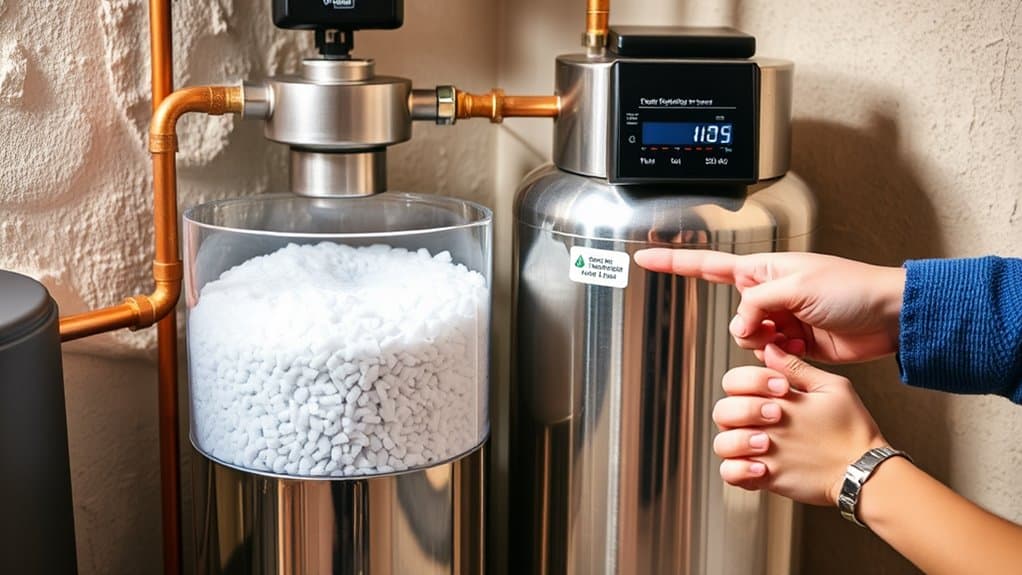
Recent market analysis reveals unmistakable signals of approaching price increases in water softening systems.
With the global market projected to grow at 7.1% CAGR through 2025, demand is significantly outpacing production capacity. In fact, the installation of smart water softeners has been linked to a dramatic 40% reduction in utility costs for homeowners.
We’re witnessing how technological advancements—particularly smart systems utilizing IoT and machine learning—are driving costs upward.
These innovations, while enhancing efficiency, require substantial R&D investment that manufacturers must recoup.
Environmental regulations are pushing manufacturers toward eco-friendly solutions, adding compliance costs that inevitably transfer to consumers.
The market is experiencing an upward trend with the global salt-based water softener market currently valued at approximately 5 billion dollars in 2025.
Meanwhile, increasing raw material prices and supply chain pressures create a perfect storm for price escalations.
Don’t wait—current installations lock in today’s pricing.
Long-Term Savings and ROI: What Smart Homeowners Already Know
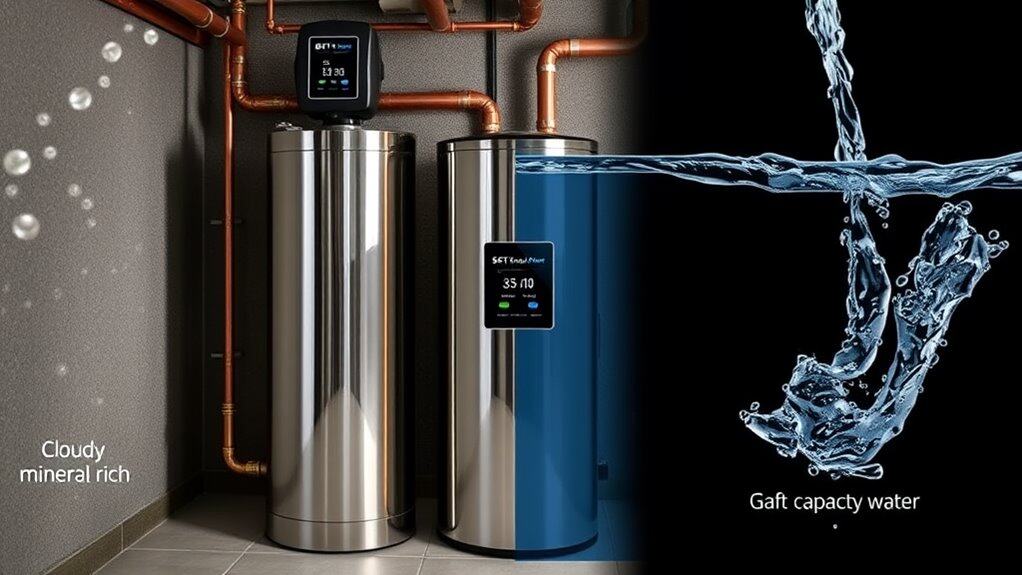
Smart homeowners recognize that water softener installation isn’t merely an expense—it’s a strategic investment with substantial long-term returns.
The numbers speak volumes: most systems pay for themselves within 20-26 months, with households saving approximately $1,550 annually.
Over ten years, these savings can exceed $15,600 through reduced maintenance costs, lower energy bills, and fewer replacement expenses. Homeowners can also avoid the significant costs associated with hard water issues that often arise from mineral buildup.
We’re seeing clients consistently report extended appliance lifespans, reduced plumbing repairs, and decreased spending on cleaning products.
Additionally, water softeners increase property values, making them attractive to future buyers.
Hard water minerals damage household appliances, causing inefficiency and shortening their lifespan, while soft water allows them to run with reduced mineral buildup.
Why wait? The financial benefits of soft water are clear and immediate.
Frequently Asked Questions
How Difficult Is DIY Installation for Salt-Free Water Softeners?
We’ve found DIY installation for salt-free water softeners is moderately challenging. You’ll need basic plumbing skills, specialized tools, and time commitment, but manufacturer guides make it doable for technically-inclined homeowners.
Can Salt-Free Systems Integrate With Existing Smart Home Technology?
We’re seeing excellent smart home integration in salt-free systems. They connect via WiFi, pair with hubs, offer remote monitoring through apps, and support voice control through Alexa compatibility.
Do Salt-Free Water Softeners Require Any Maintenance or Filter Replacements?
Yes, we need to replace pre-filters every 6-12 months and filter cartridges every six months. We’ll also need to inspect fittings for leaks, though maintenance is minimal compared to salt-based softeners.
Are There Any Health Benefits to Using Salt-Free Water Softening Systems?
We’ve found salt-free softeners offer significant health benefits by retaining essential minerals like calcium and magnesium while reducing skin irritation, improving taste, and helping those monitoring sodium intake.
How Do Water Softeners Impact Well Water Versus Municipal Water Systems?
We’ve found water softeners are more essential for well water, which typically has higher mineral content, whereas municipal water is often pre-treated. Both systems benefit from reduced scale buildup and extended appliance lifespans.
Conclusion
We’ve examined how hard water silently damages your home’s infrastructure while salt-free water softeners offer an efficient, maintenance-friendly alternative. With industry indicators pointing toward imminent price increases, the financial equation is clear. By investing now, you’re not merely avoiding higher costs—you’re securing measurable returns through extended appliance lifespans, reduced energy consumption, and decreased maintenance expenses. The data supports what proactive homeowners already understand: this isn’t spending; it’s strategic investment.

Craig “The Water Guy” Phillips is the founder of Quality Water Treatment (QWT) and creator of SoftPro Water Systems.
With over 30 years of experience, Craig has transformed the water treatment industry through his commitment to honest solutions, innovative technology, and customer education.
Known for rejecting high-pressure sales tactics in favor of a consultative approach, Craig leads a family-owned business that serves thousands of households nationwide.
Craig continues to drive innovation in water treatment while maintaining his mission of “transforming water for the betterment of humanity” through transparent pricing, comprehensive customer support, and genuine expertise.
When not developing new water treatment solutions, Craig creates educational content to help homeowners make informed decisions about their water quality.


